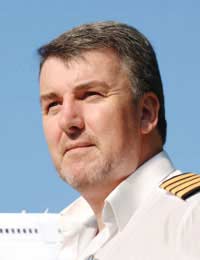Limitations of Your Pilot's Licence

There are currently two basic types of Private Pilots Licence being issued for use in the United Kingdom, the National Private Pilots Licence (NPPL) and the Private Pilots Licence (PPL). Each type of licence has its own different privileges and limitations. Choosing the type of PPL that you wish to or able to obtain depends on a several factors, some of which may or may not be under your control for a variety of reasons
Summary of The National Private Pilots Licence (NPPL)
- Minimum age 17 Years. Minimum age for first solo is 16 years of age.
- Licence is currently issued for life and does not need to be renewed.
- Medical is a simpler Department and Vehicle Licensing Agency (DVLA) Group 2 standard for professional drivers certificate validated by your GP.
- Unable to fly outside UK as Pilot In Command in Simple Single Engine Aircraft (SSEA)
- Cannot receive payment for public transport or aerial work, unless that person is an instructor.
Summary of The Private Pilots Licence (PPL)
- Minimum age 17 years. Minimum age for first solo is 16 years of age.
- Licence is valid for 5 years and must be renewed
- Medical is a more detailed Initial CAA JAR Class 2 (private pilot) medical examination, which must be carried out by an approved Civil Aviation Authority (CAA) doctor.
- Able to pilot aircraft outside of the UK to other contracting states as P1.
- Cannot receive payment for public transport or aerial work, unless that person is an instructor.
Main Difference Between the Two Types of Licence
The two main differences between these types of licence are fairly straightforward. Basically the medical requirements for the NPPL are a lot simpler than those required for the PPL and the holder of a NPPL is not allowed to fly outside of the UK as pilot in command (P1)Why Would You Choose a NPPL and Not a PPL?
It could be that you simply do not wish to travel abroad and obtaining a PPL would be surplus to requirements. It may also be that you are unable to fully meet the requirements of the CAA JAR class 2 medical but you still wish to fly as P1 albeit in the UK.A NPPL licence is also regarded as a “sport and recreational” licence and is used purely for that purpose whereas the PPL can be considered as part of your training towards a commercial licence should you wish to follow this path.
Whatever the reason for you choice it is still best to discuss which option you should finally take with the instructors at your chosen flying school. They will be able to give you good advice based on your requirements and situation about which licence option is best for you.
Privileges and limitations occasionally change and it is your responsibility to keep up to date with those changes for the type of licence that has been granted to you


Re: Aircraft General & Principles of Flight
how old do you have to be and how much is a lesson
Re: Aircraft General & Principles of Flight
Give the types of aircraft engines and its performance